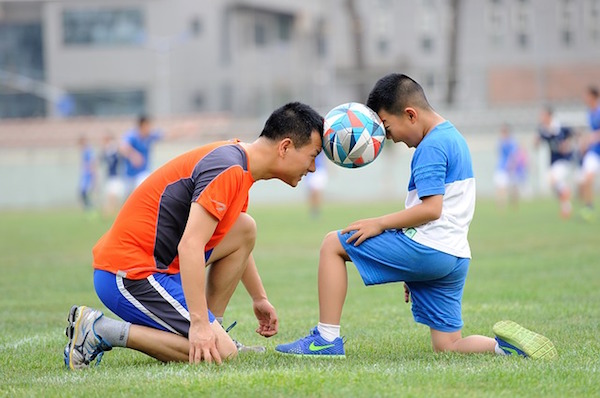Did you know that dental injuries are the most common type of oral-facial injury sustained during sports participation? Now that the spring sports season is about to begin, it’s important to be sure you are taking necessary precaution to protect your child’s smile.
According to the American Dental Association, an estimated 12 million people age 5 to 22 years suffer a sport-related injury annually. These injuries most frequently cause cracked and fractured teeth, lip lacerations, tooth trauma symptoms including sensitivity to hot and cold temperatures and exposed nerves. High impact collisions can also cause avulsed teeth, concussions and broken jaws.
Wearing a mouthguard can prevent both minor and serious facial injuries. These injuries are painful, costly and permanent. Wearing a well-fitted mouthguard and protective headgear can prevent or minimize many of these injuries. A properly fitted mouthguard will not interfere with performance at any level.
Who Should Wear a Mouthguard?
Traditionally, mouthguards were recommended only for athletes involved in contact sports. The rules are changing as more injuries are occurring during other sporting activities as well. Whenever there is a strong chance for contact with other participants or hard surfaces, it is recommended that a mouthguard is worn. The American Dental Association recommends wearing custom mouthguards for the following sports: basketball, boxing, field hockey, football, gymnastics, handball, ice hockey, lacrosse, martial arts, racquetball, roller hockey, rugby, shot putting, skateboarding, skiing, skydiving, soccer, squash, surfing, volleyball, water polo, weightlifting and wrestling.
Choosing a Mouthguard
A mouthguard should provide maximum protection against traumatic force. Choosing a more comfortable mouthguard ensures that it will remain in place during sports – a mouthguard that does not fit properly may be knocked out. Properly fitted mouthguards will also allow your child to talk and breathe freely. Most importantly, your child is more likely to wear a mouthguard if it’s comfortable to wear.
Three Types of Mouthguards
Ready-made mouthguards are inexpensive and available at most sports stores. They cannot be adjusted to fit an individual mouth. They may be uncomfortable as they often interfere with breathing and talking.
“Boil and bite” mouthguards are also inexpensive and readily available and can be molded to your child’s mouth. To create the mold, place the mouthguard in boiling water and bite into the warm plastic. This process can be repeated until a good fit is achieved. These mouthguards can also interfere with speech and breathing.
A custom-fitted mouthguard can be obtained from a dentist. They are more expensive but have an exceptionally good fit. Therefore, they do not interfere with breathing or speech. These can be designed in a variety of colors and styles to fit your child’s individual style or match their team colors.
Choose a mouthguard that is easy to clean and keep it clean by rinsing it with cold water after each use. Your child can rinse it off using their water bottle after practice. Occasionally clean your mouthguard in a solution of soap and cool water. Mouthguards are susceptible to wear and tear so replace your mouthguard every sports season. Store your mouthguard in a sturdy vented container and avoid exposure to hot water or sunlight. Remember to bring it in from the car!
Sports should be fun and safe. Get a proper mouthguard to ensure your child’s mouth is protected. Game time should be fun for your child and worry free for you. Have fun and be safe!

